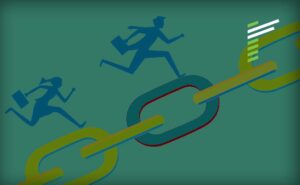INTRODUCTION
Heavy industry is capital intensive due to the significant investments required in equipment, facilities, and technology, as well as the ongoing costs associated with raw materials, labor, and energy.
Overall, the relevance of organizational effectiveness for procurement functions of steel manufacturing plants is critical for achieving cost savings, maintaining quality and reliability, and driving innovation in the supply chain. By focusing on organizational effectiveness, procurement functions can help steel manufacturing plants optimize their supply chain and gain a competitive advantage in the market.
THE CHALLENGE
Our Client, one of the largest global steel and manufacturing conglomerates, had identified opportunities to improve cost efficiencies and productivity by integrating the procurement functions in two different countries. Procurement practices, processes and systems were quite different between these countries, and so the Client expected there would be many challenges.
Consequently, the company sought assistance from Renoir to design a robust procurement operating model that would address the challenges and ensure a seamless, integrated operation.
PROJECT APPROACH & OPPORTUNITY ANALYSIS
Two Management Action Teams (MATs) were set up in each country along with a Task Force. The MATs were responsible for implementing change in their respective areas and reporting progress weekly, whilst a Steering Committee met fortnightly to provide overall direction.
The project was split in three stages, namely
- Assessment
- Target Operating Model Design
- Roadmap Initiatives and Transition Planning
The project started with assessments at both locations, covering seven operating model elements: Procurement Strategy, Technology, Organisation Design, Performance, Processes, Supplier and Category Management and Risk Management.
The Assessment Stage utilised our World Class Procurement Model to benchmark the current procurement practices against some 203 criteria covering the seven operating model elements.
Many other stakeholders were involved in the Assessment Stage including IT, Finance and HR. The joint teams reviewed, critiqued and identified pain points associated with each criterium. Scoring against the 203 criteria was the outcome of joint review by the MATs and Renoir consultants.
Results of the assessments in both locations were fed into a maturity model with levels ranging (in increasing maturity) for each of the operating model elements. The main finding from this was that one location scored mainly in the Advanced level whereas the other location scored between the Developing and Established levels.
IMPLEMENTATION
The focus of the project then shifted towards the creation of an Integrated Procurement Operating Model. The high-level definition and design principles of the target operating model were developed, providing direction for defining details relating to people, systems, process, and technology without being overly prescriptive.
The To-Be operating model was used as a benchmark against which the current maturity level of each location was compared. Workshops with MAT members were held, and an Opportunity Log analysed in order to develop the plan to deliver the new operating model. Once validated, all opportunities were converted into specific and targeted initiatives spanning both locations.
All initiatives were then reviewed in detail to assess how they impact each operating model element. The initiatives were also categorized according to the scale of the benefit to the organisation and how difficult they were to implement.
A transition plan was drafted with the intention of implementing initiatives in stages with milestones. Initiatives were distributed between the MATs according to various criteria. Implementation results and progress toward full adoption were measured and tracked using the maturity model.
“I did not expect the project to be finished within the budgeted duration with such high-quality work, but thanks to Renoir’s governance, firm commitment and high-quality output, we achieved the project objectives. Our engagement with Renoir has been highly beneficial to our organisation.”
Chief Procurement Officer
KEY RESULTS
Working with the Client, Renoir achieved the following results at the end of the project:
146
Detailed initiatives
54
Detailed project charters
Target operating model designed and validated
Maturity assessment conducted
Transition plan and roadmap developed
CONCLUSION
The Client and Renoir collaboration resulted in a shared and aligned procurement process between both countries. Significant process changes and ways of working in both locations were made, including management style and working attitudes. The deep engagement of Procurement staff during Assessment and Ideation stages meant that it was much easier to achieve behaviour changes and adoption required in the Implementation phase.
The implementation of efficient, integrated and consistent procurement processes has made a major contribution to the organizational effectiveness, which allows for cost savings, increased quality and reliability, and the opportunity to innovate the supply chain soon.










